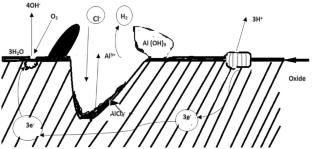Effect of Nano Reinforcements on the Hardness and Corrosion Resistance of Hybrid Composites
Abstract
This study investigated the ability of an aluminium 6351 matrix strengthened with a combination of nano-ceramic particulates to resist corrosion and mechanical characteristics while varying the nano-zirconia weight percent. To create the composite material, nano-zirconium dioxide particles were added in increments of 3% (ranging from 3 to 9 wt.%) to the AA6351-nanoSiC (5 wt.%) composite using powder metallurgy. To assess the effect of incorporating nano-zirconium dioxide reinforcement on the corrosion behaviour of the composite material, we conducted electrochemical polarisation measurements in a 3.5% sodium chloride solution and hardness by Vickers hardness. The study demonstrated that the addition of greater quantities of nano-zirconium dioxide (ZrO2) particles to an aluminium alloy with a nano-silicon carbide (SiC) matrix resulted in an enhancement of its corrosion resistance. Quantitative analysis from microscopy data demonstrated a uniform distribution of reinforcing particles within the aluminium matrix, with minimal deviation from an even dispersion. Adding ZrO2 nanoparticles to AA6351-SiC composites significantly boosted microhardness, peaking at 144.3 HV with 9 wt.% ZrO2 content. These findings suggest that the incorporation of nano-zirconium dioxide particles in the aluminium alloy has the potential to improve its hardness and corrosion resistance, which could be valuable for a wide range of applications.



 求助内容:
求助内容: 应助结果提醒方式:
应助结果提醒方式:


